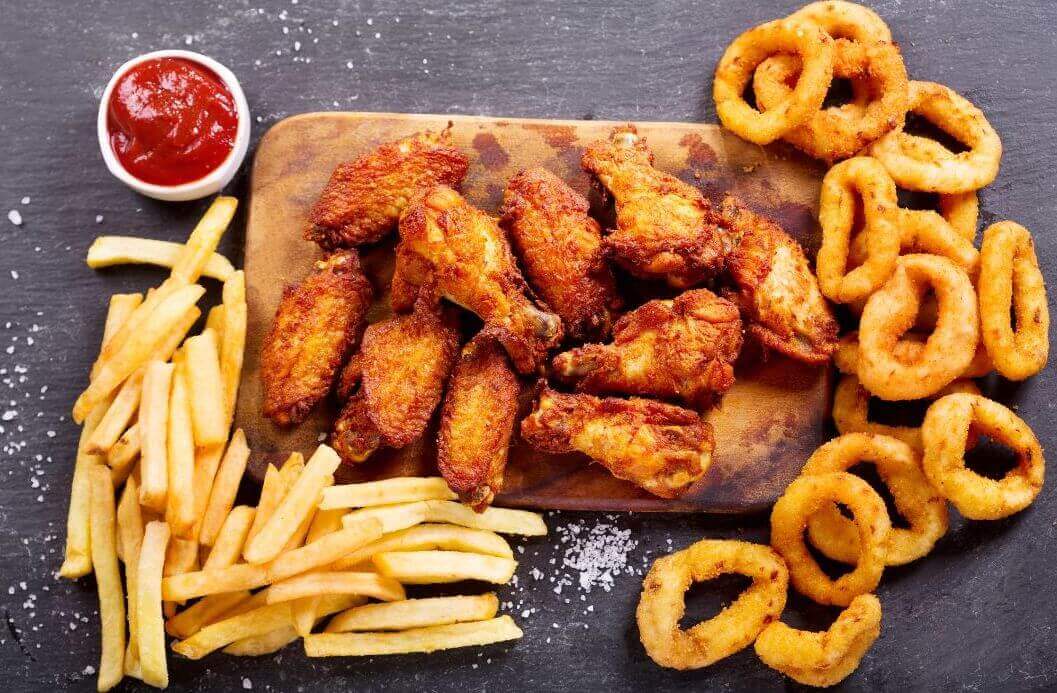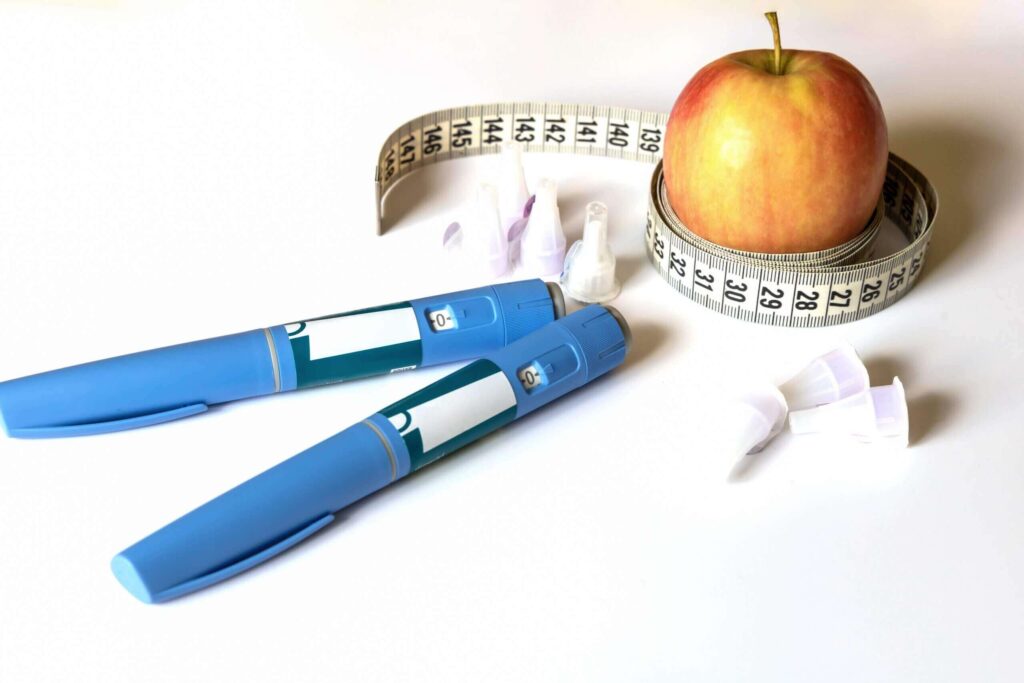‘Which foods should you avoid when taking Ozempic?’ is a question asked by many people wishing to lose weight effectively.
Ozempic is a drug designed for people with type 2 diabetes; however, it is a treatment that can be prescribed off-label for weight loss. If you offer Ozempic treatment within your clinic, you must ensure your clients regularly exercise and maintain a healthy diet.
But there are some foods that your clients should avoid or at least keep to a minimum when taking Ozempic to stay healthy and maintain their weight loss goals. Find out what foods these are so you can impart this information to your clients, helping them to achieve the best results possible while on Ozempic.
1. Saturated Fats

Whether your client is on Ozempic or not, eating large quantities of saturated fats, i.e. greasy and fried foods, can lead to weight gain and poor health overall.
However, consuming greasy and fried foods is even more detrimental for people on Ozempic since these food types can exacerbate any side effects they experience.
For example, nausea, vomiting, diarrhoea, and constipation may worsen for your client if they eat excessive amounts of saturated fats.
Therefore, to mitigate side effects and support weight loss, your client should avoid any foods consisting of saturated fats.
2. Added Sugar

Like saturated fats, too much sugar can increase your client’s side effects, particularly nausea and vomiting.
If your client has type 2 diabetes or high blood pressure, they may want to avoid sugar altogether.
Foods that contain sugar include sweets, chocolate, cakes, fizzy drinks, and other items you wouldn’t expect, such as sauces, ready-to-eat meals, and frozen foods.
By reducing their sugar intake, clients can allow Ozempic to control blood sugar levels better.
3. Refined Carbs

Refined carbohydrates are foods made from grains; the grains lose fibre, vitamins, and minerals during the refining process.
The problem with refined carbs is that, when consumed, they digest very quickly and lead to a build-up of fat.
White bread, pasta, high-sugar cereals, white rice, and other starchy foods are examples of refined carbs.
Therefore, fibre-rich carbs are much better for your clients who are on Ozempic.
Furthermore, refined carbs can interfere with blood sugar levels, something your clients will want to avoid, particularly if they have type 2 diabetes.
4. High Sodium Foods

People on Ozempic should limit their intake of high-sodium (salt) foods.
Foods like cheese, soup, frozen meals, sauces, processed meat, and pizza are usually high in sodium, increasing blood pressure and even leading to heart disease. For this reason, advise your clients to refrain from overeating these foods.
Basically, Ozempic lowers the risk of heart problems, but if your client consumes too many high-sodium foods, this will potentially impede the outcome or aggravate symptoms.
5. Alcohol

Advise your clients to limit their alcohol intake when on Ozempic. This is because alcoholic beverages will increase the risk of them becoming dehydrated or even drastically lower their blood sugars (Hypoglycemia) due to a reduction in the amount of sugar released by the liver.
Your clients should limit themselves to one alcoholic drink per day, and they should ensure that they eat regularly (every few hours) as it will help keep blood sugar levels stable.
Furthermore, alcohol will increase your client’s calorie intake, which is counterproductive if they are on Ozempic to lose weight.
6. Caffeine

Like alcohol, caffeine also causes low blood sugar and dehydration.
Your clients on Ozempic should limit caffeine consumption to one caffeinated drink daily, such as one coffee or fizzy drink.
If your client consumes too much caffeine, they are more likely to experience increased stomach pains, nausea, vomiting, diarrhoea, and constipation.
To stay well-hydrated, your clients should consume high water levels throughout the day instead.
7. Fruits High in Natural Sugar

Fruits high in natural sugars, such as apples, grapes, and oranges, may interfere with the effect Ozempic has on the recipient.
So, advise your clients to avoid eating fruits high in natural sugars in large quantities or on an empty stomach. Ideally, they should eat fruit alongside protein-rich meals.
While a healthy diet is crucial for people on Ozempic, there are other ways they can increase their vitamin intake instead of solely relying on fruit, such as having Vitamin injections.
Alternatively, watermelon, strawberries, blueberries, blackberries, and raspberries are fruits low in natural sugars.
8. High-Glycemic Vegetables

Although everyone should make vegetables a part of their diet, some have a high glycemic index. High-glycemic vegetables cause the blood sugar levels to rise at varying degrees around two hours after consumption.
People on Ozempic should avoid these high-glycemic foods since they can increase the risk of heart disease and other related issues.
Carrots, potatoes, beetroot, and parsnips are just a few examples of vegetables that are high-glycemic.
Broccoli, cabbage, cauliflower, and peppers, are examples of vegetables that have a low glycemic index.
Looking for more information on Ozempic?
To conclude, regardless of the type of weight loss products your clients use, they should maintain a well-balanced diet and regular exercise.
They should also follow these tips to ensure optimum results and reduce side effects:
- Have their Ozempic injections before their meals as opposed to after – eating this way reduces the likelihood of side effects, such as nausea and vomiting.
- Eat slowly – Semaglutide, the active ingredient in Ozempic, decreases gastric emptying, i.e. slows digestion. This means recipients feel full quicker, so eating slower is essential to prevent them from feeling too full and avoid leading to sickness or vomiting.
- Eat small meals – As with eating quickly, heavy meals can cause sickness.
Revolve Medicare offers other medications you can incorporate into your clinic to aid your clients in losing weight, including Ozempic products and Trulicity weight loss products.
Contact us today if you have any questions regarding weight loss treatments.





